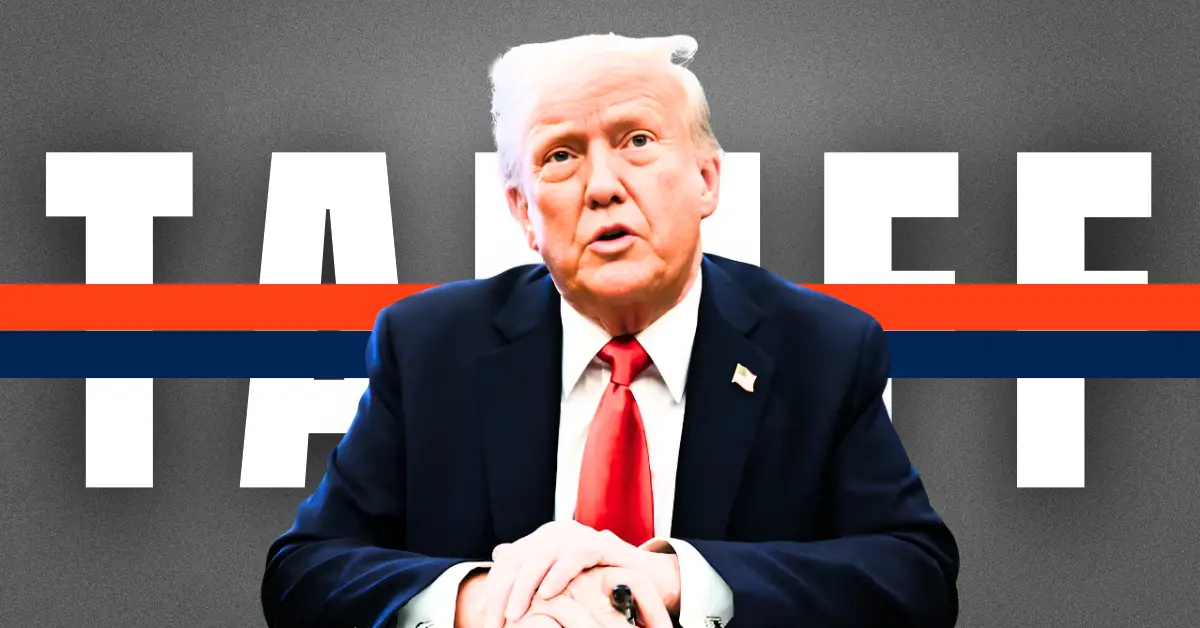
In early April, U.S. President Donald Trump rolled out new import tariffs aimed at countries with the largest trade surpluses with the United States. The market reaction? Immediate and sharp. Between April 2 and 8, the global crypto market cap dropped by 11.63%.
This isn’t just about trade policy anymore. Tariffs have become a new source of global market volatility and crypto is feeling the pressure.
Here’s what’s happening, and what crypto investors should keep an eye on.
Tariffs are taxes placed on imported goods. Governments use them to protect local industries from overseas competition. For example, if the U.S. adds a tariff on imported steel, that steel becomes more expensive, giving U.S.-made steel an advantage in price.
But while they may help domestic industries in the short term, tariffs often come with unintended consequences.
Tariffs are risky tools that often backfire:
Tariffs don’t target crypto directly, but they do create conditions that impact the market. Here’s how:
When trade tensions rise, markets become uncertain. Investors tend to pull out of riskier assets like crypto and move toward safer options like gold or U.S. Treasury bonds. This shift lowers demand and drives crypto prices down.
Tariffs can fuel inflation. In response, central banks may raise interest rates to cool things down. Higher rates reduce liquidity, making it harder for money to flow into volatile assets like crypto.
After the recent tariff announcement, the crypto market saw a sharp 11.63% drop in less than a week. Fear-driven sell-offs are common during economic policy shifts, especially when investor confidence is low.
Crypto mining relies heavily on imported hardware. Tariffs increase those costs, which can reduce mining activity. That in turn could affect the security and decentralization of blockchain networks.
It’s not all bad news. Some parts of the crypto space can actually benefit from the chaos tariffs create.
Stablecoin adoption rises
In countries hit by inflation or currency devaluation due to tariffs, people often turn to stablecoins like USDT or USDC to preserve the value of their money. This increases usage and adoption of stablecoins in global markets.
Volatility creates trading opportunities
Market swings triggered by tariff news give traders more room to profit. Strategies like options straddles or pair trading let them capitalize on price moves in either direction.
Trump’s tariffs may be aimed at fixing trade imbalances, but their ripple effects go far wider – shaking financial markets and dragging crypto into the storm. From rising inflation to disrupted supply chains, the impact is real.
Still, for stablecoins and volatility-savvy traders, this is also a chance to capitalize.
Your takeaway? Even a trade war can open the door to new strategies and growth.
The tariffs sparked global tension and fear, leading to an 11.63% crypto market cap drop as investors fled riskier assets.
Yes, tariffs can boost stablecoin use in inflation-hit economies and create profit opportunities through volatility trading.
Yes, tariffs can fuel inflation, prompting rate hikes that reduce liquidity and hurt crypto investment flows.
Over 13,200 holders have already positioned themselves in Mutuum Finance (MUTM)—a fast-rising DeFi project that’s…
Dogecoin (DOGE) has traditionally been the undisputed leader, as it drew the attention of investors.…
The ongoing clash between President Donald Trump and Federal Reserve Chair Jerome Powell is hitting…
Veteran trader Peter Brandt is once again making headlines in the crypto world. Posting on…
XRP holders have had a bumpy ride over the past week. After showing a strong…
The crypto ETF race is getting interesting, and ETF expert Nate Geraci isn’t holding back.…